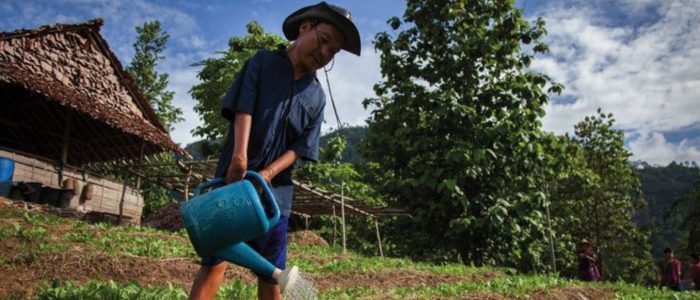Refugee Employment and Income Generation Opportunities
Burmese refugees have been crossing the border into Thailand since 1984, fleeing incessant fighting in South-eastern Myanmar, religious and ethnic persecution and resulting economic hardship.
However as political change in Myanmar enables voluntary repatriation of Burmese refugees, the need arises for technical and vocational skills to generate sustainable income both in the camps and in Myanmar.
In this context, Handicap International (HI) with funding support of the Office of the United Nations High Commissioner for Refugees (UNHCR), commissioned EMC to conduct a study of existing livelihood and income-generating opportunities for refugees with disabilities in Thailand and Myanmar. This study was undertaken in four refugee camps along the Thai-Myanmar border in Tak and Mae Hong Son provinces from October-November 2014.
This study sought to identify existing livelihood practices, as well as assess potential employment and income-generating opportunities in the areas surrounding the camps, with the following specific objectives:
• To improve understanding and document/analyse the labour market and its access to people with disabilities on the Thailand-Myanmar border camps in the perspective of the durable solutions including repatriation of refugees in Myanmar.
• To improve understanding from livelihood services providers in the camps about how the skills developed in the camps are matching with labor markets out of the camps in Thailand and assess their level of inclusion (existing barriers, e.g. physical, attitudes, practices, policies)
• To increase awareness of the above issues amongst refugees and humanitarian and development stakeholders
The study was developed in line with the sector strategy highlighted in UNHCR’s “Strategic Framework for Durable Solutions 2013/14”. The development of the Livelihood Sector is a cornerstone of this strategic framework which envisions conducting comprehensive needs assessments to design relevant skills trainings that coincide with livelihood opportunities and promote independence and self-reliance. The same document also stresses the importance of ensuring equitable access and participation of vulnerable groups.
Qualitative and quantitative data was collected from local leaders, local and international organizations working in the camps, individual refugees with disabilities, and from households containing at least person with a disability. The analysis of this data led to a range of findings, which are highlighted below and detailed in the following report:
• The majority of households interviewed participated in some form of agricultural work in Myanmar. Agricultural work continues to be the most common and most desired form of work for these households, but individual refugees with disabilities more commonly reported livestock raising and petty trade as their preferred livelihood options.
• 25% of the household interviews reported having at least one member who had taken a vocational training course. Of these households, 25% reported having used the skills gained from that course to earn income.
• 68% of interviewed households believe that they need additional training to pursue their desired livelihood options, while only 17% consider vocational training to be currently available to them.
• Lack of access to start-up capital was the most commonly reported barrier to desired livelihoods as well as a commonly reported reason why more people did not attend vocational trainings. Lack of accessible land, lack of confidence, and lack of skills and education were also commonly reported barriers to desired livelihoods.
• Agriculture was the dominant sector in the surveyed areas outside of the camps and included 57% of all surveyed employers, with hospitality being the next most prominent industry (16%).
• 29% of employers surveyed either currently hire or have previously hired people with disabilities. 34% of respondents would be prepared to hire people with disabilities in the future.
• 57% of employers surveyed have hired refugees, while 60% have hired migrants. The most common type of work for which refugees and migrant workers are hired is low-skilled agricultural labour followed by low-skilled manual labour in construction and the manufacturing industry.
Recommendations on addressing the barriers identified in the findings, as well as establishing partnerships with local Thai employers to enhance refugees’ skills set that could be used both in Thailand and Myanmar and other general recommendations are also detailed in the report. These include working with both service providers and local organizations, such as the established self-help groups for people with disabilities, to advocate for more inclusive services, including access to start-up capital and accessible land for cultivation. Key methods of information dissemination in the camps regarding jobs and services should also be tested and adapted to ensure equal access to opportunities.
The full report can be downloaded here:

Comments are closed.